Pacific World - Midterm 1
1/35
There's no tags or description
Looks like no tags are added yet.
Name | Mastery | Learn | Test | Matching | Spaced |
|---|
No study sessions yet.
36 Terms
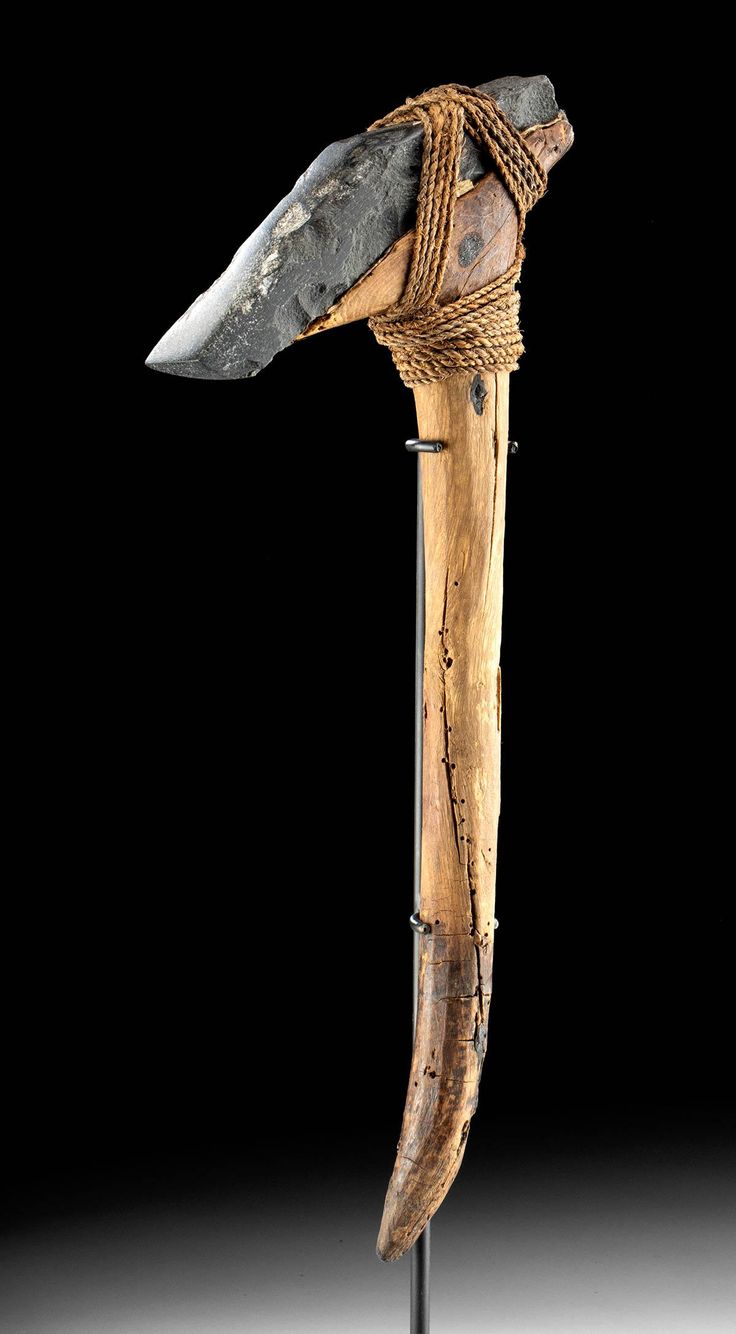
Basalt adzes
Basalt adzes are ancient stone tools, often made from volcanic basalt, used for woodworking.
A variety of basalt adzes, such as those from Hawaii or Southeast Asia, were made and used by various cultures for purposes from felling trees to delicate carving.
Belitung Shipwreck
A 9th-century Arab trading vessel discovered off the coast of Indonesia, known for its cargo of ceramics and artifacts.
Belitung shipwreck (discovered in 1998) - Cargo found was 60,000 pieces of pottery
Not pedestrian objects, they were everyday high-end luxury items
Extensively trafficked
Following a well-established sea route
Critical mass of shipwrecks found in Belitung, Intan, and Cirebon
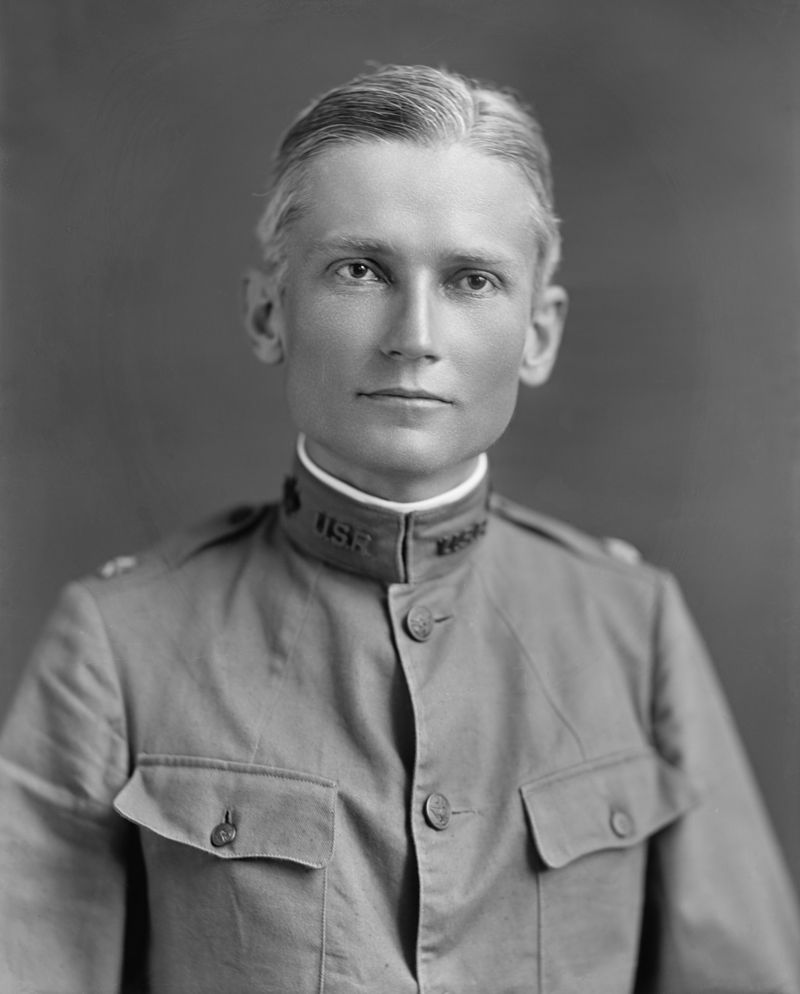
Hiram Bingham
Hiram Bingham, formally Hiram Bingham I (October 30, 1789 – November 11, 1869), was the leader of the first group of American Protestant missionaries to introduce Christianity to the Hawaiian Islands.
Like most of the missionaries, he was from New England.
Saving souls justification
His timing is good because now Hawaii is unified and known as Hawaiian kingdom - 1820s
One king and queen
Queen is open to Christianity → Converts queen
In less than 2 decades he creates state church, Westminster of Hawaii
Bible society
Builds 30 schools
Creates Hawaian language Bible - 1843
Create conditions for Western imperial entry
Justification that since there are so many Westerners there they must have a stake
Bingham thought whaling crew was bad news
Whalers beat up Bingham
Public acts implemented due to his direct access to the throne
Illegal to make noise in street
Banned hula dancing
Ban of public intoxication
Canton system
The Canton System was a Chinese policy from 1757 to 1842 that restricted all foreign trade to the port of Canton (Guangzhou) and regulated it through a group of Chinese merchants known as the co-hong.
This system was designed by the Qing dynasty to control foreign influence and trade, but it eventually led to conflict with Western powers.
The system ended after China's defeat in the First Opium War, which resulted in the opening of more ports and the abolition of the trade restrictions.
James Cook
Motivated by the spirit of exploration and enlightenment but also a subtext of imperial conquest
Discovered Hawaiian islands and traveled extensively the Pacific islands
Keeps a captain log - Useful navigation tool for those who will follow
Unlike previous travelers, Cook spent extended periods in the islands
Month long sojourns
Acts as an amateur ethnographer
Cook spends 6 months exploring the coast of New Zealand and Eastern coast of Australia
Interaction with islanders but no catastrophic results
Not seizing commodities, harming people (minus Tahiti theft), and no people left behind
Renowned for 3 journeys where he circumnavigated the world
First Voyage (1768-1771)
Science is a major goal but also establishing national pride
There are a number of scientist, botanists, and draftsmen who are brought along to document
Joseph Banks (botanist) - Obsessed with collecting biota
Professionally trained scientist who is instrumental in cataloging different kinds of flora and fauna that grow in the Pacific
Member of Royal Society
Botany Bay
Second Voyage (1772-1775)
Marine chronometer - Measure latitude and longitude
Allows for the ships to follow paths that are known to work - Prevent detours
Small ships
Experiments in social enguneering
Omai and Ahutoru were islanders that were interacting with Cook and the French Captain Bougainville
In both cases they were brought to the Imperial center (London/Paris) as a way to represent the island
Toast of the town for a few years then they would feel homesick and taken back
Test if they can assimilate again and repatriate
Part of what killed them was the exposure to germs and viruses they encountered while they were living in the hub of European civilization
Considered spectacles and were celebrities
Third Voyage (1776-1780)
Ends with Cook’s death in Hawaii
Started from Plymuth to New Zealand to Cook Islands to Tonga to Tahiti to Hawaii to North America
Death of Captain Cook
Initially he is treated extremely well
Guest that stays a little too long
Different dynamic than Magellan
Dies on shore but he was not an unknown person, had been there for weeks
One theory is that the Hawaiians had seen Cook when he arrived as part of an island myth about the god Lomo
That god when he returns is killed according to myth
Fulfilling the narrative of an ancient myth
Another theory is that Cook came, he stayed, but he was a not a well behaved guest
Willing to tolerate him at first, but when he came back they were sick of him
Within a few years of his death he is turned into a god of British exploration and scientific inquiry
A hero of British imperial project
These new lands become accessible to Europe through him
First wave of imperial course that will follow
Vasco da Gama
Vasco da Gama, was a Portuguese mariner, explorer and nobleman. His discovery of the first direct maritime route between Europe and India via the Cape of Good Hope and across the Indian Ocean from Malindi in Kenya to Kozhikode, was to open up European exploration of, and commerce with, India.
Leaves in 1499
Goes to Calicut then goes back
Loaded up ship with gold and silver, he bought a lot of cloth in India where there was already a flourishing international market on the ground
He buys spices brought from the Pacific and brings it home
Everyone wants spices!!: Cardamom, Turmeric, etc.
Port to Port trade
Leave Europe with gold/silver → Purchase cloth in India → Trade for spices in SE Asia → Purchase raw silk in Japan → Purchase porcelain and silk in China
Dutch East India Company (VOC)
Largest global corporation in the 17th century
Transformed the relationship between Europe and South East Asia
The war between Netherlands and Spain gave the Netherlands an opportunity to be in a different place economically
More capital and more skilled trading population
The Dutch East India company was founded in 1602
Before 1602 there was a period of 7 years when there were different East India companies within the Dutch republic
When Dutch republic rebelled against the King of Spain (who was also the king of Portugal)
Traders in Antwerp
Price of pepper went up
Merchants started competing with each other
Fear of that the company would become a vehicle of the state and a vehicle of war, cutting into profitability
Had to be granted privileges by the state in order to agree to VOC
Start of stock capital - Share of the company
First stock exchange of the world
Fiscal military state approach
States waging war to have trade routes, colonies, and trading rights
Quasipublic institutions like the VOC created as a result
Mixed strategy of trying to dominate other European states by combining commercial and military power
VOC as acting like a state within the state
Really are a state when they are outside of Europe
As if they are a sovereign, national power
Buying things and then selling to other people
Ex: Buying cloth from India → Bringing to spice islands and buy spice → Bring spices to China and buy silk there → Bring silk to Japan and buy silver there → Bring silver back to spice islands to buy more spices → Go back to India
Portuguese and Dutch used this model
VOC was not invincible
They were defeated by China twice
Sent presents to Japanese emperor, shogun
Amsterdam replacing Antwerp as an important site for trade
VOC outposts in the Pacific
Batavia - Headquarters of VOC, present day Jakarta
Puts them in close proximity to Spice islands
Seized Batvia and rebuilt it as a walled city in 1619
Similar to the Spanish
Major base of operations
Macau
Originally a Portuguese outpost
Dutch tried to control Macau but they were defeated in the Battle of Macau (1622)
Fort Zeelandia, Formosa (Taiwan)
Was a Spanish outpost but the Dutch took their aggressive approach and were able to seize the island
Successive ways of imperial control until it is claimed by the Qing empire (China)
Why? Because it gives you close acces to China, it is not part of the pearl river delta where everything is clustered
Fewer Chinese gov. controls
Nagasaki
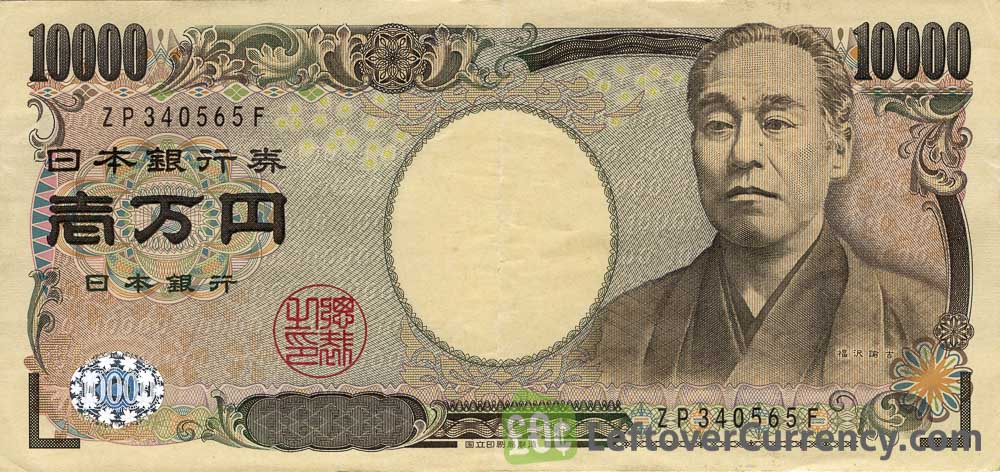
Fukuzawa Yukichi
Public intellectual
Writes about all the things he observes and all the steps Japan needs to take to modernize
Founded Keio University
He is on 10,000 yen bill! - I know him!
Wrote “Goodbye Asia” essay after the Meiji Restoration
Concerns about Western influence on the East
Ancient vs. Present-day Westerners
Slow vs. Fast-paced
Role of transportation in this
Working with Westerners is necessary to prevent total colonialism in the East
Movement of civilization = spread of measles
No effective way of preventing it
Old fashioned and bloated government that stood in the way of this movement and its progress
Now that this government has toppled, everyone in Japanese society has accepted the modern Western civilization
Relations to China and Korea
Chinese and Koreans as more alike
They are too set in their ways
Cannot survive as independent nations with the onslaught of the West
Guano Islands Act (1856)
The Guano Islands Act of 1856 allows U.S. citizens to claim any unclaimed island with guano deposits, and for the President to consider these islands part of the United States at his discretion. This was driven by the high demand for guano as a fertilizer and explosive ingredient in the 19th century.
Any unoccupied island that the Americans claim are US territory
Very imperial
Lots of gray area
US Secretary of State: William H. Seward
Over 100 islands claimed through this act
Caribbean and Pacific
By 1914, every island in Asia and Oceania had been claimed
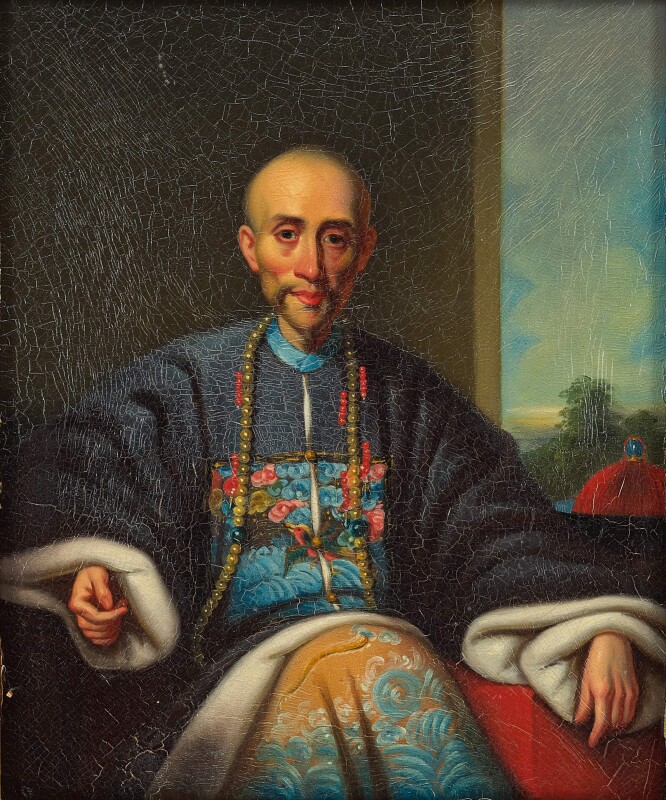
Hong merchants
Hong merchants were a group of licensed Chinese merchants in Guangzhou who held a monopoly on all foreign trade under the Canton System from roughly 1757 to 1842.
They operated as exclusive liaisons between foreign traders and were responsible for customs duties and guaranteeing the behavior of foreigners.
This role made some hong merchants extremely wealthy.
Howqua (1769-1943)
British and Americans had to rely on a Chinese intermediary
Most successful of Chinese hong merchants who mediated Western-Chinese trade
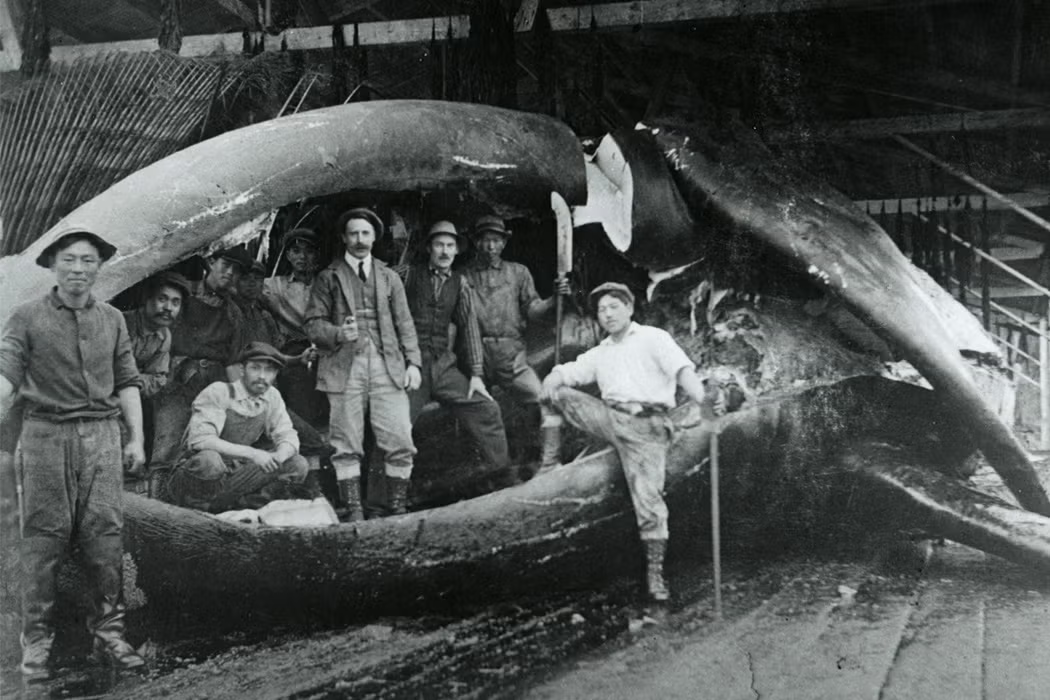
Kanakas
Kanakas were workers (a mix of voluntary and involuntary) from various Pacific Islands employed in British colonies, such as British Columbia (Canada), Fiji, Solomon Islands, Vanuatu, Papua New Guinea, and Queensland (Australia) in the 19th and early 20th centuries.
New England whaling crew - Some Asian and Pacfic Islanders join them
Not a systematic form of migration
Voluntary workers
60,000 Kanakas, or Pacific Islander “men”, are brought to Australia
Also women
Put to work on these whaling vessels that are part of the British colony’s emerging economy
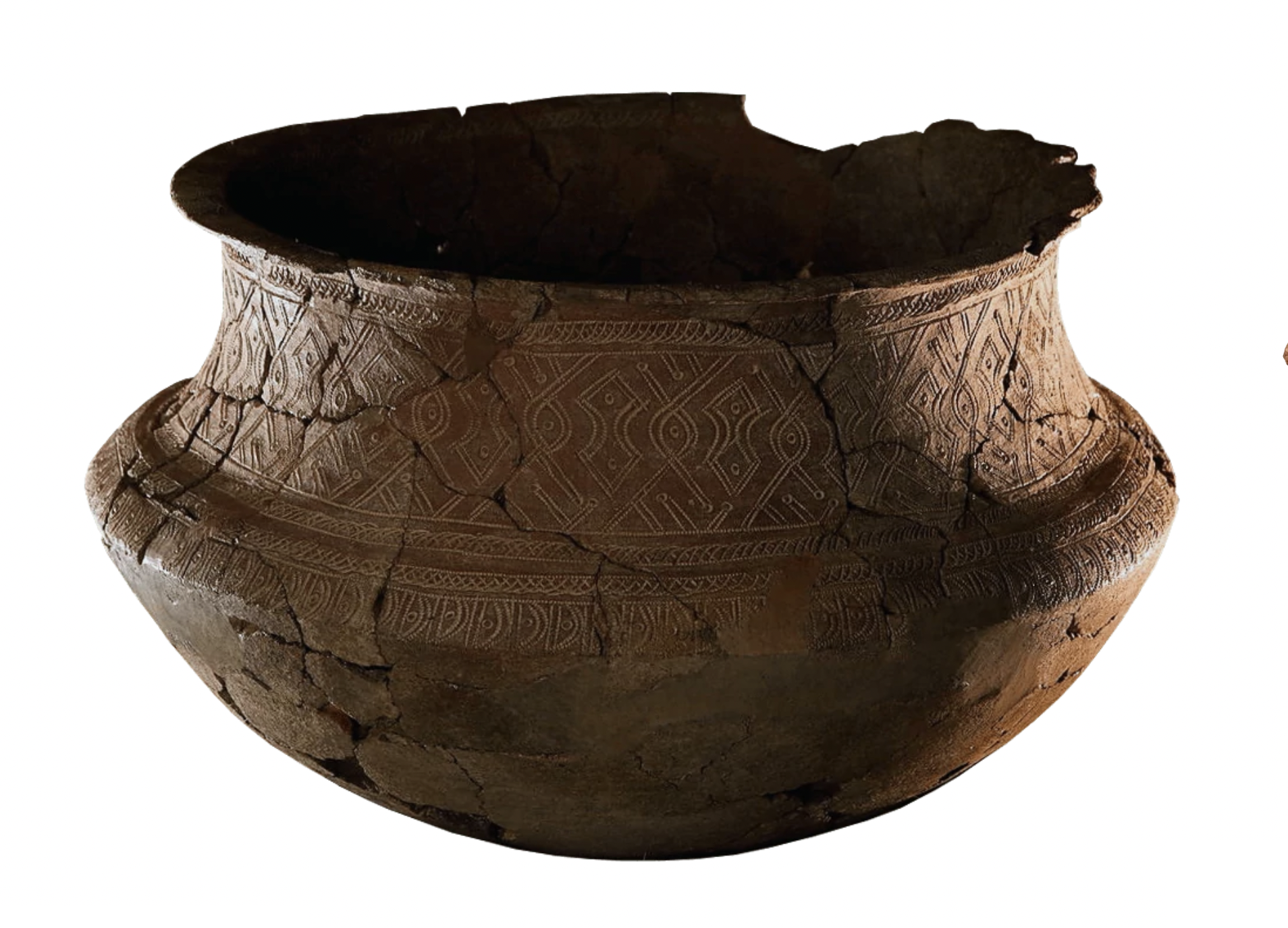
Lapita Cultural Complex
Around 3,500 years ago the earliest ancestors of many Pacific people and Māori – the people provisionally named Lapita – appeared in Oceania.
Records of the Lapita people and the way in which they lived – their culture – have been recorded across 200 sites.
The remnants of their culture is referred to as the Lapita cultural complex.
Lapita pottery
Evidence of islands communicating with one another
Lapita pottery can be found in different islands
Where they are found may indicate relations between islands
Gradual and leapfrogging settlements reflected through this pottery
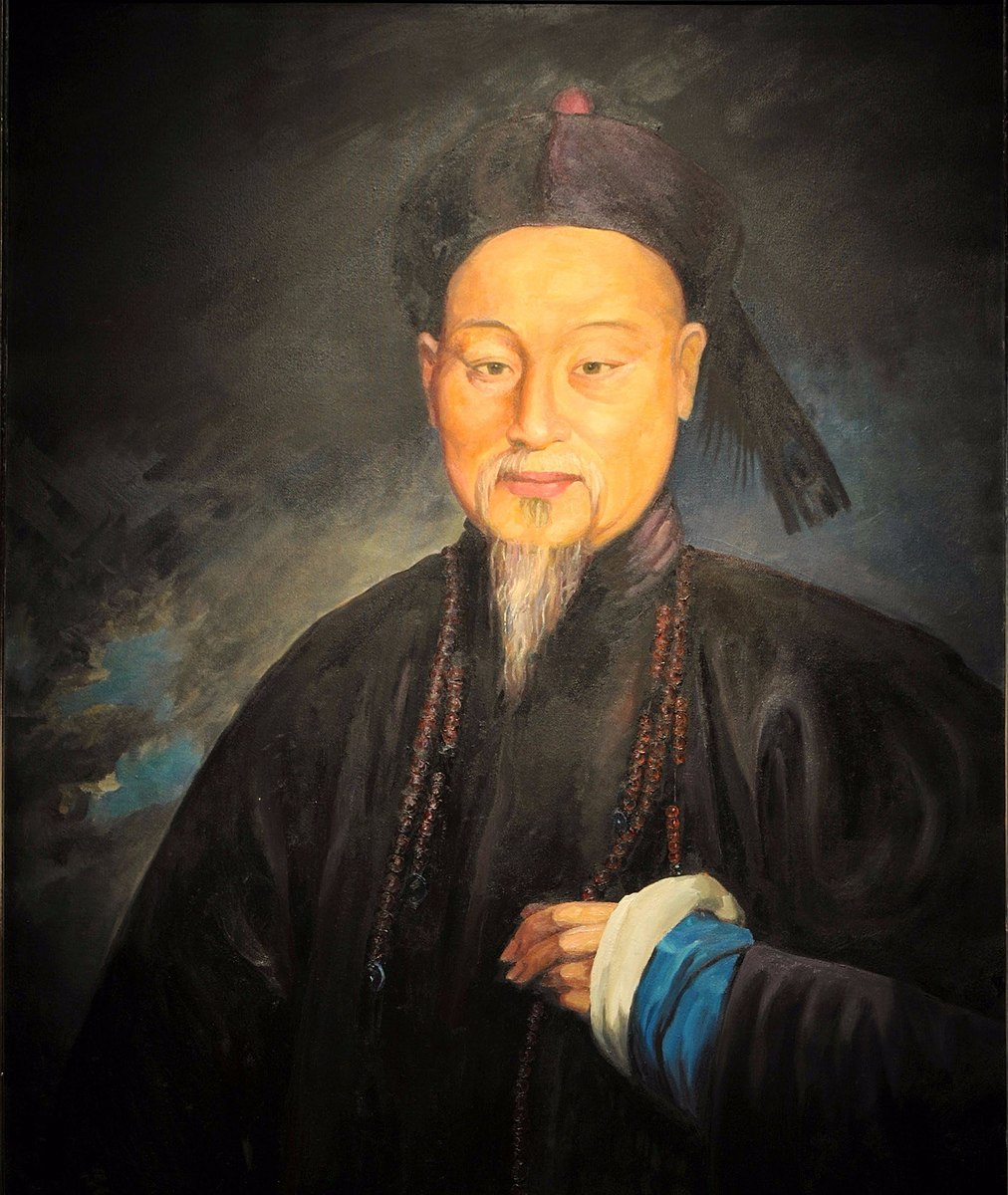
Lin Zexu
Lin Zexu, was a Chinese political philosopher and politician. He was a head of state, Governor General, scholar-official, and under the Daoguang Emperor of the Qing dynasty best known for his role in the First Opium War of 1839–42.
LIN Zexu (1785-1850), appointed to be the customs inspector at Canton shortly before the outbreak of the Opium War, addressed this letter to Queen Victoria as part of his campaign to eradicate opium from Chinese society
Confiscated smoking equipment and the drug itself
Never interacted with the British
His confiscation of Westerners’ opium and his blockading of Western enclaves would increase Chinese-British tensions and eventually lead to war.
Letter from Com. Lin to Queen Victoria
Begins by praising the emperor of China
“If there is profit, then he shares it with the peoples of the world; if there is harm, then he removes it on behalf of the world. This is because he takes the mind of Heaven and earth as his mind.”
Praising English royalty but passive aggressive
You come from an honorable country but the past kings were known for their politeness and submissiveness
We are the reason your company has wealth
“The profit from trade has been enjoyed by them continuously for two hundred years. This is the source from which your country has become known for its wealth.”
Referring to drug smugglers as barbarians
Smuggle opium to “seduce the Chinese people”
“We find that your country is sixty or seventy thousand li (distance 0.5 km) from China. Yet there are barbarian ships that strive to come here for trade for the purpose of making a great profit.”
Blaming English and these barbarians for making a profit that rightfully belongs to China according to Lin Zexu
All Chinese exports are beneficial to other countries so this is unfair, especially since opium is banned in England
“Of all that China exports to foreign countries, there is not a single thing which is not beneficial to people; they are of benefit when eaten, or of benefit when used, or of benefit when resold: all are beneficial. Is there a single article from China which has done any harm to foreign countries? Take tea and rhubarb, for example; the foreign countries cannot get along for a single day without them.”
Threats from China to cut off silk production
China can survive without your exports but you can’t survive without ours
“On the other hand, articles coming from the outside to China can only be used as toys. We can take them or get along without them. Since they are not needed by China, what difficulty would there be if we closed the frontier and stopped the trade?”
Chinese as being very gracious
Discovery that opium is being produced in India not in England
Strict measures for people who are selling opium
“Therefore in the new regulations, in regard to those barbarians who bring opium to China, the penalty is fixed at decapitation or strangulation.”
“The barbarian merchants of your country, if they wish to do business for a prolonged period, are required to obey our statutes respectfully and to cut off permanently the source of opium.”
Trade implications
Assumes that Victoria is a king…
“May you, O King, check your wicked and sift out your vicious people before they come to China, in order to guarantee the peace of your nation, to show further the sincerity of your politeness and submissiveness, and to let the two countries enjoy together the blessings of peace.”
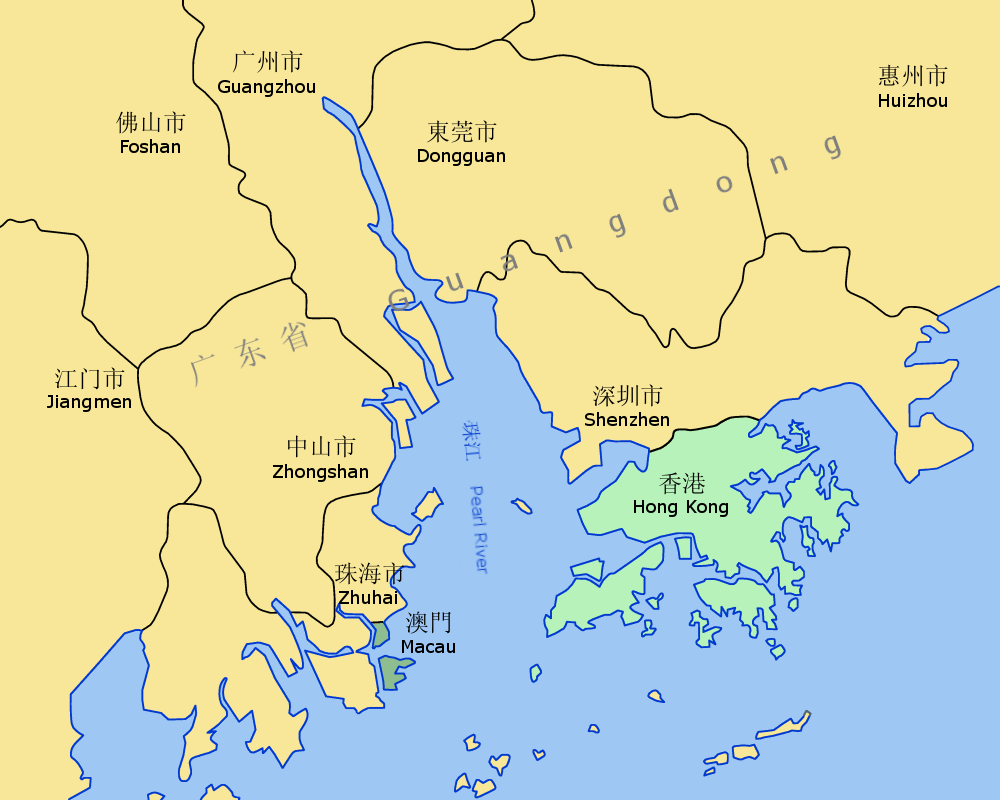
Pearl River Delta
The Pearl River Delta Metropolitan Region is the low-lying area surrounding the Pearl River estuary, where the Pearl River flows into the South China Sea.
It includes the Guangdong cities of Guangzhou, Shenzhen, and Dongguan, as well as the Special Administrative Regions of Hong Kong and Macau
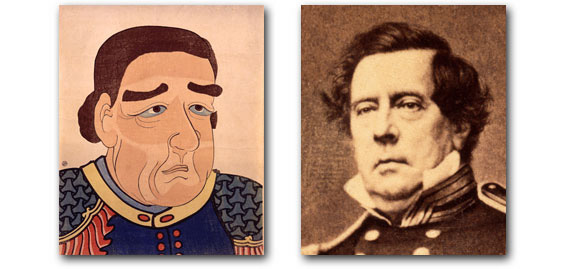
Matthew Perry
Matthew Perry was a United States Navy officer who commanded ships in several wars, including the War of 1812 and the Mexican–American War.
He led the Perry Expedition that ended Japan's isolationism and signed the Convention of Kanagawa between Japan and the United States in 1854
Com. Perry has a letter from US President Millard Fillmore (1850-1853) to emperor of Japan
But emperor is a figurehead, the military governor is the one who actually has the power
Shogun counselor receives the letter
Extensive discussion with various members of Japanese gov (feudal state with multiple domains)
Shogun does not have executive authority to say yes or no
Celebrate Com. Perry, suggesting the Japanese encounter was positive
Americans brought a lot of stuff to gift and impress the Japanese
Telegraph line
Minstrel show
Fascinated by sumo wrestling
Spend 10 months here, waiting for a response
Com. Perry gets impatient and returns home
Convention of Kanagawa
Two Japanese ports open up to American ships, ending the isolationist policy.
Sandalwood
Sandalwood is a fragrant wood from several species of slow-growing evergreen trees, most famously Santalum album (white sandalwood) native to India.
It is valued for its essential oil, which is used in perfumes, cosmetics, and traditional medicine for its aromatic and therapeutic properties
Aromatics
Status symbol as consumption of aromatics were limited to the upper echelon of society
The Tale of Genji by Lady Murasaki
Lead characters who lived in the Kyoto Imperial Palace devoted attention to aromatics
Aromatics originated in Islamic world and SE Asia and were transshipped via Song dynasty China to the port of Fukuoka, Japan
Mark of a gentleman was his own distinctive scent - Genji included
Genji spent hours making his own perfume
Women also perfumed their clothing
Chinese and Japanese used wood or resin in their fragrances
Aromatics much more important then than they are now
Seven Years’ War (1756-1763)
French and Indian War
British lost the US
Motivation for their Pacific exploration
Claimed Philippines for quick interlude but reverts to Spanish control again
The Seven Years' War had a significant impact on the Pacific world, primarily through a British campaign against Spanish interests in the Philippines, which resulted in the temporary occupation of Manila
In 1762, the British captured Manila, the capital of the Philippines. They were met with resistance from Spanish forces and local allies, but ultimately succeeded in taking the city.
The conflict in the Pacific officially ended with the signing of the Treaty of Paris in 1763, which returned the Philippines to Spanish control.
Spice trade
Spice trade: Nutmeg, Pepper, Cinnamon, Cloves
Portuguese had monopoly on the spice trade
Route around Africa
Take over spice in Goa, Malacca, and Hormuz
Controlled all spice routes from Asia to Europe except for the Overland trade (controlled by Arabs)
Pepper was important because it was rare in Europe, used in cooking and for medicinal purposes
Give taste to food
Treaty of Ganghwa (1876)
The Treaty of Ganghwa, or the Japan-Korea Treaty of 1876, was a treaty signed on February 26, 1876, between Japan and Korea. It was the result of a Japanese military incident on Ganghwa Island and forced Korea to open its ports to Japanese trade, recognized Korea's independence from China, and granted Japan extraterritorial rights. The treaty was pivotal in ending Korea's isolationist policies and increasing Japanese influence in the region.
Recognition of Korea as a state
“Same sovereign rights as Japan”
Reciprocal relationship established (not only Korea visiting) - Article 2
Japan and Korea would exchange envoys within fifteen months and permanently maintain diplomatic missions in each country.
Article 4 terminated Tsushima’s centuries-old role as a diplomatic intermediary by abolishing all agreements then existing between Korea and Tsushima
Korea will open 2 ports
Article 5 authorized, in addition to the open port of Pusan, the search in Kyongsang, Kyonggi, Chungchong, Cholla, and Hamgyong Provinces for two more suitable seaports for Japanese trade to be opened in October 1877
Japan has upper hand
Whenever Japanese vessels either by stress of weather or by want of fuel and provisions cannot reach one or the other of the open ports in Chosen, they may enter any port or harbour either to take refuge therein, or to get supplies of wood, coal and other necessities or to make repairs; the expenses incurred thereby are to be defrayed by the ship’s master. - Article 6
Explicitly mentions Japanese vessels first… not Korean ones
Article 7 permitted any Japanese mariner to conduct surveys and mapping operations at will in the seas off the Korean peninsula’s coastline.
Data
Article 8 permitted Japanese merchants’ residence, unhindered trade, and the right to lease land and buildings for those purposes in the open ports.
Article 9 guaranteed the freedom to conduct business without interference from either government and to trade without restrictions or prohibitions.
Treaty of Nanjing (1842)
First unequal treaty
The Treaty of Nanjing, signed on August 29, 1842, formally ended the First Opium War between Great Britain and China.
The treaty compelled China to cede Hong Kong to Britain, pay a large indemnity, open five treaty ports for trade and residence, and grant extraterritoriality and most-favored-nation status to the British in a subsequent agreement.
It is considered the first of the "unequal treaties" that significantly weakened Chinese sovereignty and set a precedent for foreign powers to gain control over key aspects of Chinese trade and governance.
Treaty of Tordesillas (1494)
Spanish given the Atlantic
Portuguese given the other direction, making its way to Southeast Asia (spice islands)
The Treaty of Tordesillas was a 1494 agreement between Spain and Portugal that divided the newly discovered lands outside of Europe between the two countries along a meridian 370 leagues west of the Cape Verde Islands.
Lands to the west were granted to Spain, and lands to the east to Portugal.
This division significantly influenced the colonization of the Americas, leading to the Portuguese colonization of Brazil, and was established without the consent of the Indigenous peoples living in those lands.
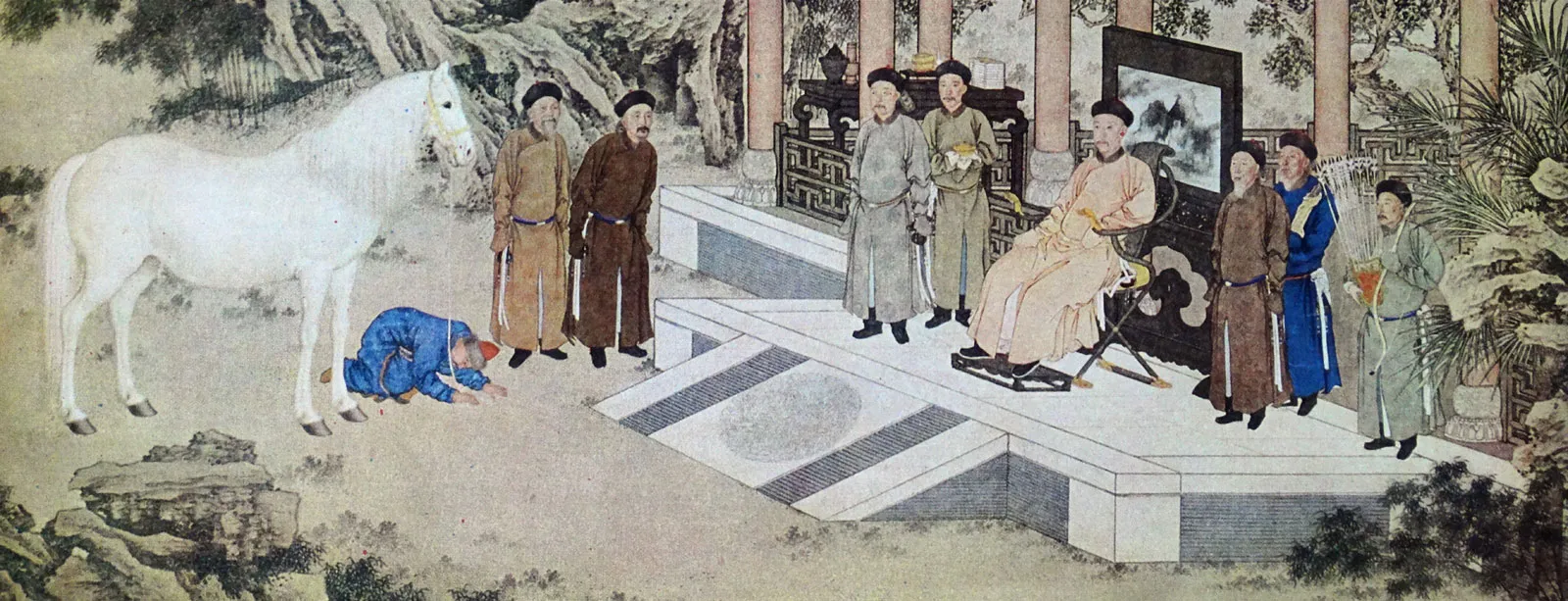
Tribute system
A tribute system is a political and economic arrangement where a less powerful state or region gives gifts and pays homage to a more powerful state in exchange for protection, trade rights, and diplomatic legitimacy.
China's traditional tributary system, which lasted for millennia, was based on the idea of Chinese superiority, with tributary states sending gifts and performing acts of subservience like the kowtow to the Chinese emperor in exchange for receiving a letter of patent, the right to trade, and protection.
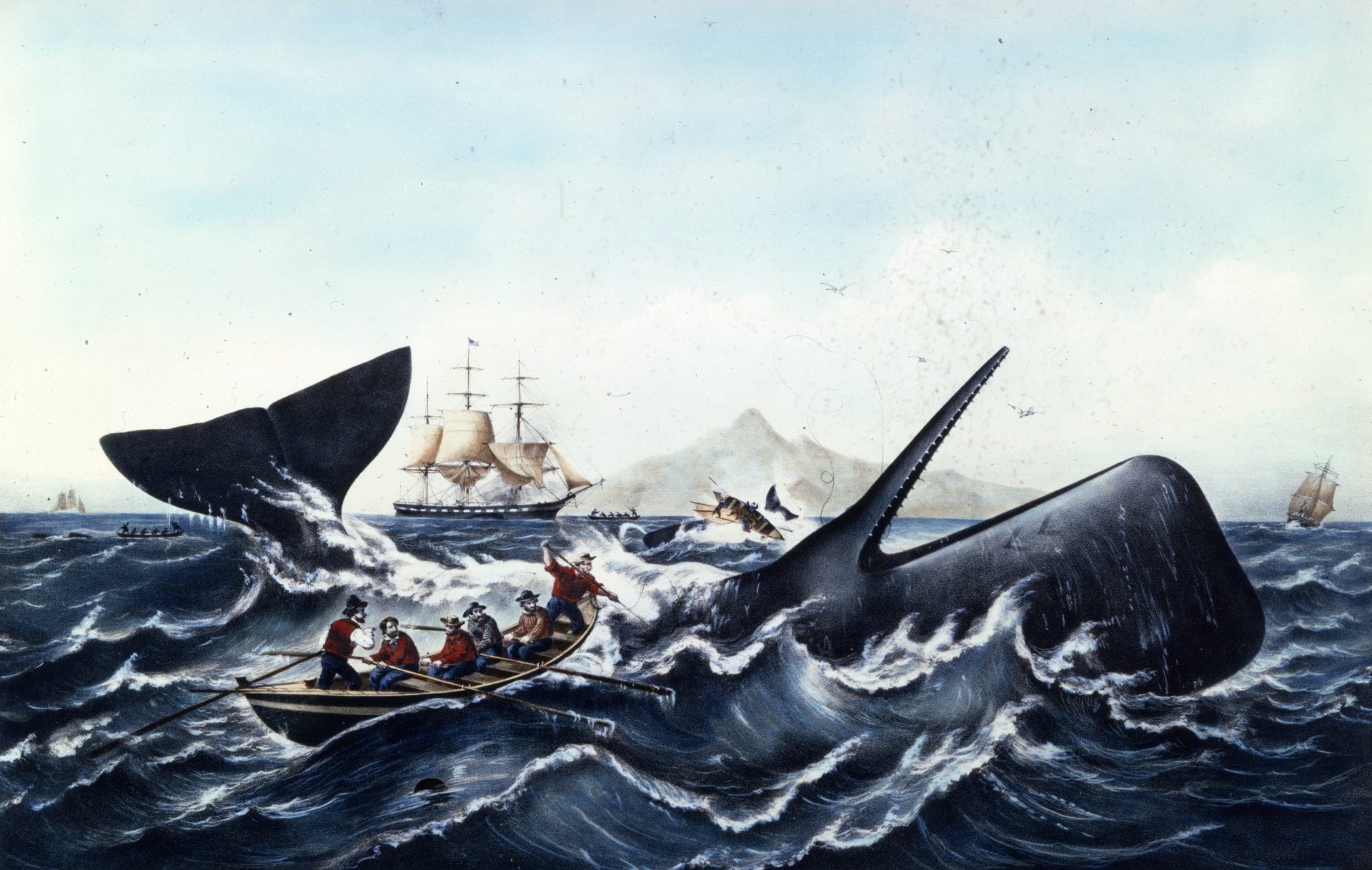
Whaling
Moby Dick: Whaling is imperial
Published in 1851, roughly after hay-day of whaling
Whaling in Pacific Northwest, Cape Verde, Marquesas, Fiji
Following migration patterns and intel
They start close to home and harvest everything
Need to go further to find more whales
Ecological neoimperialism
Resource harvesting
Depleting
Why is whaling so important?
It is not pretty work
Oil for lighting, fuel, and lubrication
Soap
Decorative
Scrimshaw (whale tooth/bone) with carving on it
Material for corsets
New England whalers are estimated to have killed 225,500 sperm whales and 193,500 right whales
New England whaling crew - Some Asian and Pacfic Islanders join them
Not a systematic form of migration
Voluntary workers
60,000 Kanakas, or Pacific Islander “men”, are brought to Australia
Also women
Put to work on these whaling vessels that are part of the British colony’s emerging economy
Many shipwrecks happen
Zheng He
Zheng He was an admiral and diplomat who helped extend the maritime and commercial influence of China throughout the regions bordering the Indian Ocean. He commanded seven naval expeditions almost a century before the Portuguese reached India by sailing around the southern tip of Africa.
Zheng He’s seven voyages (1405-1430s)
Multiple voyage routes
5x the size of Christopher Columbus’ ship - 27,500 people traveled with Zheng He
Length of the ship was 400 ft - Larger than a football field
Representative of Chinese might
Galle Trilingual Inscription
Sri Lanka (1409)
Passive aggressive
Political tensions
Stone edifice, evidence that Zheng He was there
Exotic things that tribute states sent like exotic animals
Giraffe
Zheng He became a legendary person, a shrine/temple was made for him in Indonesia
Ferdinand Magellan
Portuguese
Entered Indian Ocean beforehand
Tried to convince the Crown that he could go further East and enter the spice islands - Rejected by Portuguese
Instead decided to do this with the Spanish
Statue of Pigafetta in Cebu
Santa Maria smaller than Chinese ships (1/5th the size)
Forced to sail Atlantic because he was working with Spain
Killed in Mactan - Does not actually circumnavigate the world
Ship that carried Magellan had 18, the other ship had 17 - High stakes, begun with 35
Magellan in Mactan
Pigafetta
Captain speaking to King of Zzubu
Attempt to initiate him into the faith of Jesus Christ
King replied that he would convert but his chief men did not agree → Captain threatens to kill them if they do not convert → They obey him
Captain left behind 2 men but take away 2 children to have them taught their language
Promise that he would make him greatest king because he was first to convert
Captain set up a cross
Magellan’s Cross
Must burn all idols of his country - Erasure of Filipino religion
Baptism of the Queen and she was renamed
Idols not burned in hopes they would heal someone
Magellan says he would be cured if baptized and king promises to burn the idols
Christianization of Filipino people
Mattan Island - Mactan
Refused Christianization
So a fight was declared
Europeans could hardly defend themselves
So Magellan sent his men to burn their houses
Poisoned arrow through Magellan’s leg
Eventually Magellan is killed and they retreat
Lapu-Lapu
People of Mactan would not give up Magellan’s body
Māhele (1848)
1840s - Hawaiian government sees threat of growing number of white settlers
Prevent overtaking of white property owners through mahele
Replaced the traditional communal system with private land ownership
Plenty of Hawaiians who could not own title and land
Start selling small plots of land to white settlers
Unsuccessful
By 1860s and 1870s, they are clamoring for London to intervene and set up some type of governmental presence there
Americans also involved
By 1898, Americans have colonized the islands
Manila Galleon Trade
Manila’s Galleon Trade (1565-1815)
Manila-Acapulco galleon trade
Founding of Manila (1571)
1561 - Spanish have firm control of Manila, takes a while
Pigafetta’s account is instrumental
New Spain silver, Chinese private merchants
Potosi Mines, Bolivia
Discovery of silver mountaingenerates so much wealth that the expression was “to be as rich as Potosi”
Silver mined in Potosi moves to Acapulco which then moves to Manila where goods are acquired throughout the Pacific
Chinese demand for silver
Not a lot that connects Spanish colonies to Seville so Acapulco becomes center of economic activity
Galleon trade begins in 1565
250 years of regular ships sailing from New World
4 month long trip to complete
1 or 2 ships per year
Because they are following a well-known path, they missed the Hawaiian islands all together
Beginning of trans-Pacific migrations
Goods exchanged:
Westbound (Manila to Acapulco): The galleons transported a variety of Asian luxury goods, including Chinese silks, porcelain, ivory, and spices.
Eastbound (Acapulco to Manila): The primary return cargo consisted of silver and gold from the Americas, which were used to purchase Asian commodities and for minting coins in China
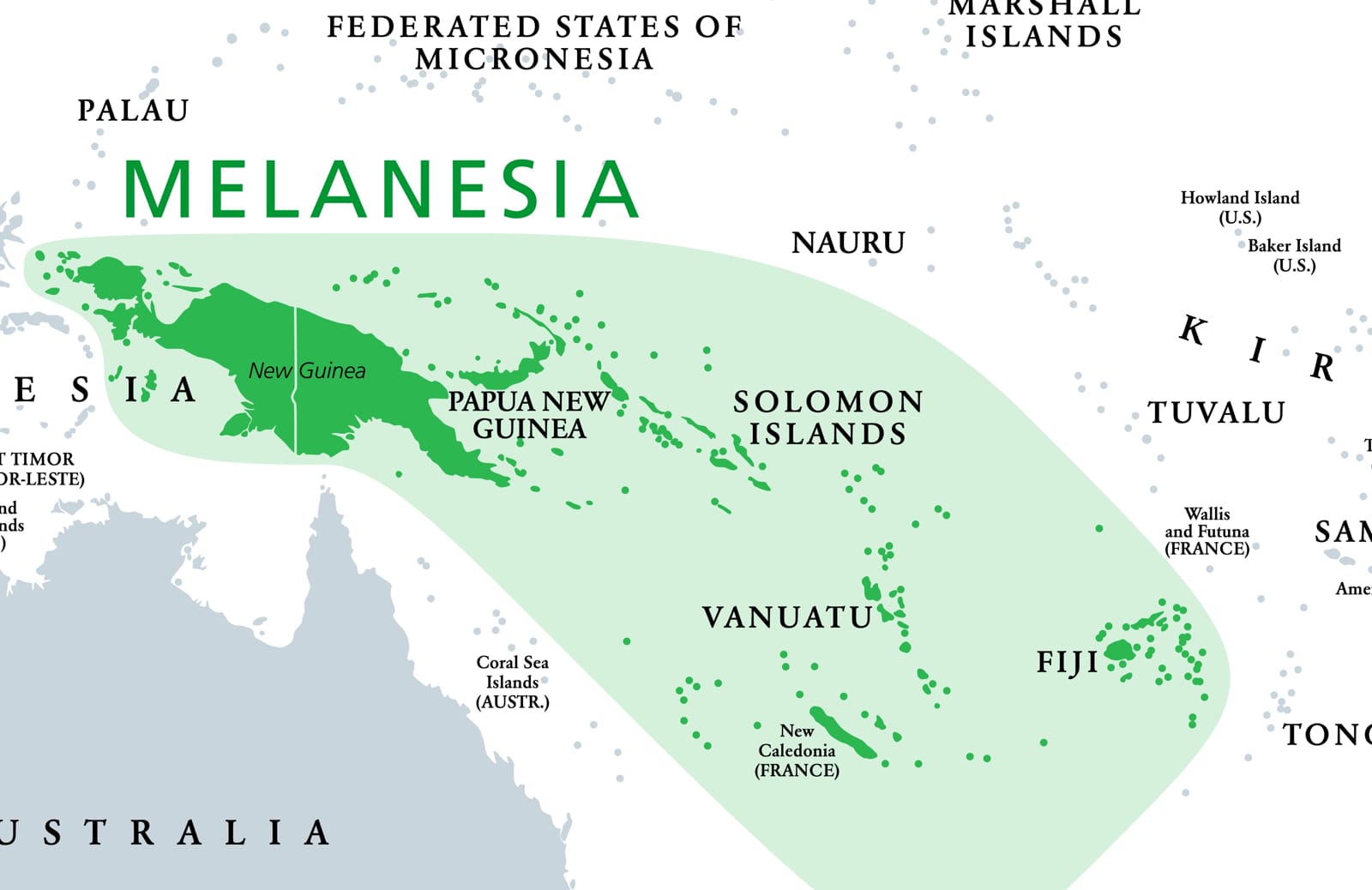
Melanesia
Melanesia is a subregion of Oceania in the southwestern Pacific Ocean.
The region includes the four independent countries of Fiji, Vanuatu, Solomon Islands, and Papua New Guinea.
Nagasaki
Nagasaki: Dejima
Japan’s portal to Europe
Dejima is located off Nagasaki
Dutch are able to approach the Japanese government which decided that they did not want Europeans on Japanese lands
Imposed ban on the Spanish and Portuguese who were the first wave of Europeans to enter Japan
Dutch were able to convince the shogunate that they are not interested in promoting the state or their god, we just want money
Succesful!
Only Dutch are allowed to trade with Japan
Trading in a quarantined zone - Dejima
A development project designed to house the Dutch when they are trading
A group of VOC lives year round here
No freedom of movement
Negotiations taking place in Dutch
Access to water, food, and women were super controlled
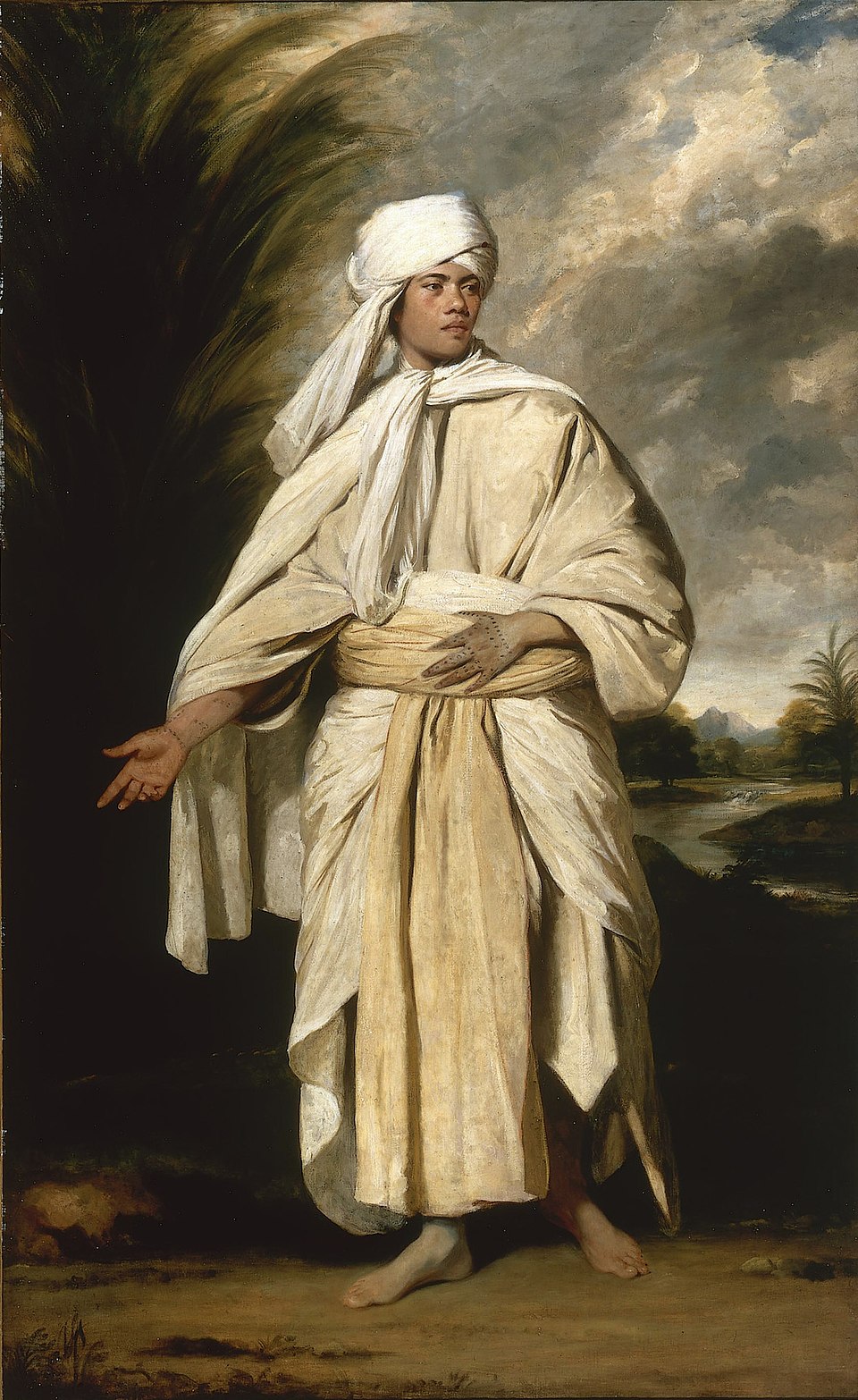
Omai
Omai and Ahutoru were islanders that were interacting with Cook and the French Captain Bougainville
In both cases they were brought to the Imperial center (London/Paris) as a way to represent the island
Toast of the town for a few years then they would feel homesick and taken back
Test if they can assimilate again and repatriate
Part of what killed them was the exposure to germs and viruses they encountered while they were living in the hub of European civilization
During his two-year stay in England, Omai became much admired within London high society. Renowned for his charm, quick wit and exotic good looks, he quickly became a favorite of the aristocratic elite
Opium
Opium is a dried latex from the opium poppy, containing alkaloids like morphine, codeine, and thebaine, which are used for pain relief and are processed to create drugs like heroin.
Opium Wars
Opium has become linked to the Chinese
Derogatory prints in Britain and US
Opium den - Squalid opiate, lower class consumption
Contrasts artifacts like opium pipes which seems artisanal
Opium had been around and practiced in China but not all that widely
In 30 million, only 100,000 addicts into 1800
Social problem but not a catashtrophic one
British saw opium as a solution to the trade imbalance
Solve British woes in China and India
Produce opium in British-controlled India then bring it over to China
Sell it and build an addicted population who are constantly craving this
Removing opium from British-controlled territories
Street opium
Market created 10 million addicts over the course of a century
British trade imbalance problem is solved and now China has a severe monetary problem
Opium Czar - Commissioner Lin Zexu is on opium control
Begins century of humiliation
2 Opium Wars
First Opium War (1839–1842)
British decided that they could take on the Chinese in war
Steam ships and steel artillery which put Europeans at an advantage
British were now in the business of training soldiers in different parts of their empire and being able to ship them to theaters of conflict
Soldiers from India
Second Opium War (1856–1860)
After a decade and a half of British domination
Still don’t have complete economic spoils that they had hoped for, still a trade imbalance
French get involved and they also want to enter China
Among casualties is the Chinese summer palace
Completely sacked by British soldiers
Empress’ pet is taken from its owners and brought to England and becomes a gift to Queen Victoria
Looty, Britains’s first Pekinese
Zodiac bronze heads looted and used as trophies by Europeans
Polynesian Voyaging Society
The Polynesian Voyaging Society (PVS) is a non-profit organization in Hawaiʻi founded in 1973 to revive traditional Polynesian voyaging and wayfinding, proving that ancient Polynesians settled the Pacific using ancestral knowledge instead of modern instruments.